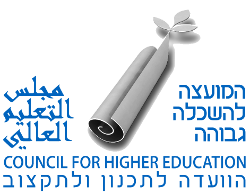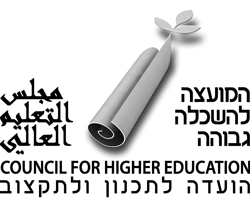The Planning and Budgeting Committee Approved NIS 500m for Establishing and Upgrading Research Infrastructure
For the first time, the Planning and Budgeting Committee has approved a multiyear program for establishing and upgrading research infrastructure at research universities: the program includes, inter alia, equipment grants for the new and mid-career researchers, recruiting and hiring professional personnel for operating research infrastructure and establishing unique infrastructure centers.
Chairperson of the Planning and Budgeting Committee, Prof. Yaffa Zilbershats: “The Planning and Budgeting Committee has made strengthening research infrastructure a central goal of its multiyear work plan. The new program includes additional budgets worth several hundred million shekel. This is significant, good news for Israeli science in general and for researchers in particular. Upgrading research infrastructure will make it possible to continue developing high-quality research and position Israel at the forefront of international science.”
Good news for young and mid-career researchers old: The Planning and Budgeting Committee has approved a multiyear (2018-2022) plan for establishing and upgrading research infrastructure at research universities, worth approximately NIS 500 million. The plan is based on the recommendations of the expert committee chaired by Prof. Yeshayahu Talmon, a member of the Planning and Budgeting Committee.
Both institutional infrastructure (which serves researchers at an academic institution) and personal infrastructure (which serves an individual researcher) are included in this program.
Purpose of the program: To position Israel at the forefront of international science.
Principal elements of the multiyear program to establish and upgrade research infrastructure:
1. Equipment grants for new researchers totaling NIS 150 million:
This program is intended for new researchers who have been employed by the university for less than three years. Research proposals will be judged, inter alia, for the level of research and innovation, and the indispensability and importance of the requested equipment for specialty of that researcher.
2. For the first time – Equipment grants for mid-career researchers totaling NIS 65 million:
In most cases, when researchers have 10-20 years of experience in the system, the initial package of benefits and most of the equipment grants they were awarded have been completely exhausted. These researchers have difficulty renovating their laboratories or changing their field of research, which leads to a loss of important research potential.
In order to help contend with this situation, the Planning and Budgeting Committee has introduced a new program of equipment grants for mid-career researchers, to help outstanding researchers in this category renew their laboratories or change their research field, and to help them utilize their scientific potential and experience.
The grant applications will be judged, inter alia, according to the quality of the planned research that will use the requested equipment, the achievements of the lab making the request, and its scientific activity (students, publications, scientific presence, obtaining research grants, etc.).
3. For the first time – Grants toward recruiting and employing professional personnel to operate and manage institutional research infrastructure totaling NIS 29 million:
Considering the importance and centrality of employing quality, professional personnel when establishing and operating sophisticated research infrastructure, the Planning and Budgeting Committee approved the introduction of a new grant program to assist with the recruiting and employing of professional personnel to operate and manage the new infrastructure.
Grants through the new program will finance 50% of the cost of employing professional personnel for the new infrastructure up to a total of NIS 175,000 per year and will be granted for a period of up to four years. The grants will be conditional on the institution’s commitment to continuing the salary line for at least four more years.
The grant applications will be judged, inter alia, on how essential the personnel are for operating the infrastructure equipment.
4. New grant program for institutional equipment totaling NIS 194 million:
Institutional infrastructure is a central component of the overall research infrastructure, and serves the research needs of a wide range of institutional users.
Request for these grants will be judged, inter alia, on the basis of the innovativeness and sophistication of the requested equipment, and the originality of the research it is intended to serve. Moreover, we will consider the ability of the institution to provide the physical infrastructure necessary for the equipment, support it with service contracts, and allocate skilled personnel to operate it for an extended period.
This new program will be operated by the Planning and Budgeting Committee and will replace, beginning in 2010, the program for institutional equipment grants operated by the National Science Foundation. The budget of the new program will be significantly larger than the budget of the existing program, and the equipment grants distributed in this context will be higher than those currently granted.
5. For the first time – Research grants to improve the accessibility of unique infrastructure centers totaling NIS 18 million:
The Planning and Budgeting Committee approved a new program of research grants for making unique research infrastructures accessible. It is intended to help researchers finance the use of these infrastructures, which are relatively more expensive for their size than the usual research grants in Israel. This program will make sophisticated research equipment accessible to researchers in Israel, will help increase the income of the infrastructure centers, and improve the professionalism of the staff operating them.
Infrastructure centers will be selected, inter alia, according to the uniqueness of their infrastructure, their scientific and technological level, the cost of using the infrastructure facilities, compliance with the dimensions necessary for the infrastructure to be accessible to researchers, the level of service that the research center is committed to providing, and the dissemination of information regarding the services provided by the center, etc.


